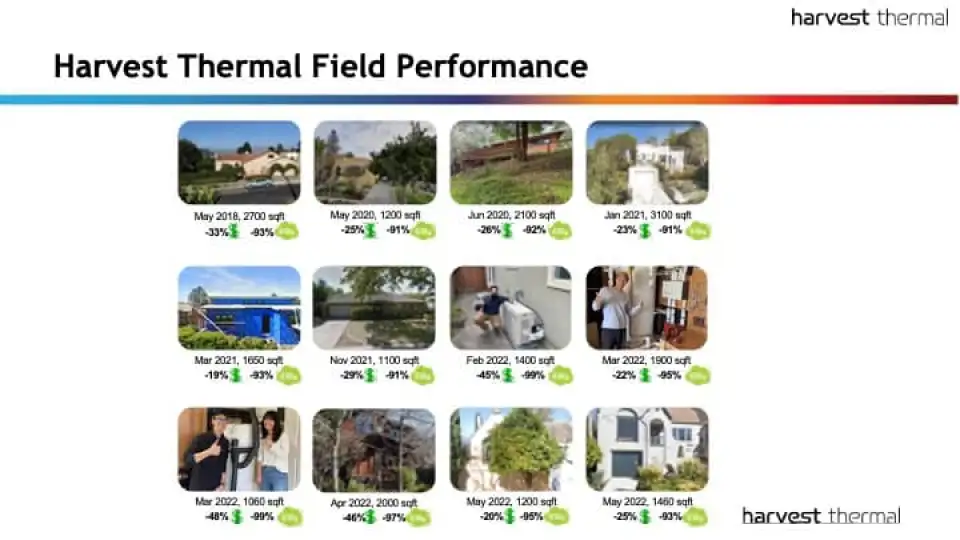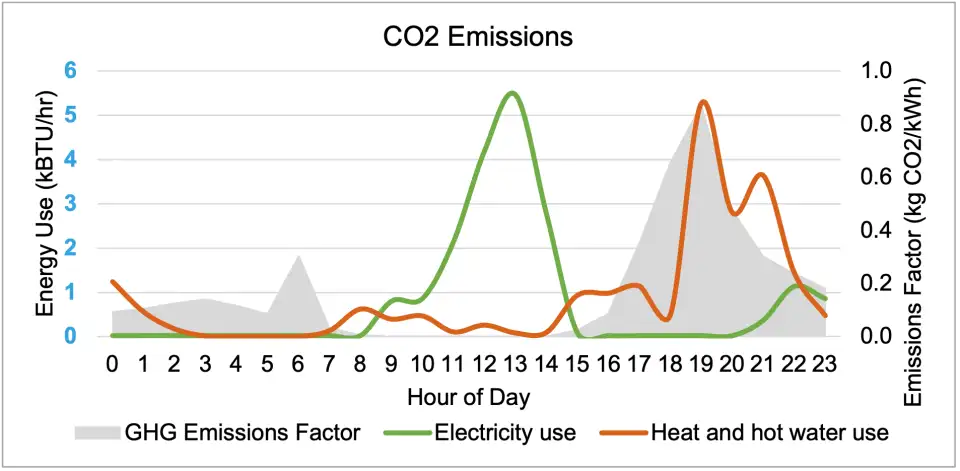
When we look back on the 2020s we will see clearly that the revolution to remove fossil fuels from the built environment was taking shape before our very eyes. Powerful tailwinds exist today for building decarbonization, from the recent enactment of the federal government’s Inflation Reduction Act to progressive building codes in California, New York, Massachusetts, Maine, Oregon, Washington, and British Columbia, and beyond.
Still, in many locales across North America, the outstanding home performance question is what will be the dominant technology to replace methane gas for the largest sources of energy consumption in the home: heating and hot water. Heat pumps are incredible, almost magical, machines, transferring as heat 3 to 5 times more energy than they consume—a remarkable improvement in energy efficiency compared to fossil-fueled appliances. Most gas furnaces on the market today have an efficiency factor of 0.8 and for gas water heaters, it’s around 0.5 depending on usage.
But, the unintended consequence of installing heat pumps for home heating and hot water is the additional demand for electricity, particularly during peak periods, when it often comes from dirty, nonrenewable sources. Imagine a typical, cold February morning when the alarm clock rings and families crawl out from under their covers into a warm room and step into a hot shower to start their day. With all-electric heating and hot water, that surge in electricity demand will come in the dark before solar energy ramps up. The grid of 2030 will be cleaner than today, but it will still have to rely on gas-fired “peaker” plants and “baseload” power for that early morning and early evening surge to heat our homes and fill our hot water tanks, and that energy mix will be invariably dirtier than mid-day energy.
How can we make all-electric space heating and hot water the cleanest, most sustainable solution while delivering significant savings on energy costs compared to gas? That’s the problem Harvest Thermal set out to solve. And, the solution had to be as convenient and comfortable, if not better, than current systems.
Harvest Thermal launched commercially in February 2022, and our systems are providing outstanding performance on par with our first five pilots (see “Ultra-Low-Carbon Hot Water and Space Conditioning”). With a dozen commercial projects deployed—18 total in variously sized homes—our system is cutting carbon emissions by 90% or more, compared to gas equipment, and by 50% compared to standard heat pump solutions. And, homeowners are achieving savings of up to 45% on their monthly heating and hot water bills—a huge win for the family budget (see Figure 1).

What drives these results? Thermal storage. The Harvest Pod transforms an ordinary hot water tank into a thermal battery. The Pod operates a single, ultra-efficient heat pump during the day when electricity is clean, cheap, and abundant, heating water in the tank to 150°F. Stored hot water is released from the tank whenever needed, passing through a heat exchanger and blown into ducts for space heat, and mixed to 120°F in a mixing valve before traveling directly through the home’s water lines to the fixtures.
To ensure reliable and sufficient supplies of hot water, the intelligent Pod uses cloud-enabled analytics, electronic controls, and machine learning algorithms to predict energy needs 24 hours ahead. It incorporates customer preferences, weather forecasts, and emissions data for optimal energy efficiency. During power outages, the system will continue to deliver hot water for several days, while standard tank water heaters will only provide hot water for a few hours. Harvest, therefore, provides both resilience and comfort in the case of outages.
Deployed at scale, Harvest Thermal’s load-shifting capabilities will enable the use of more renewable energy, smoothing grid peak demand and making the grid more resilient. This past spring, Peninsula Clean Energy (PCE), a leading Community Choice Aggregator, partnered with Harvest Thermal to demonstrate the value of Harvest Thermal to the electric grid. PCE installed four units in customers’ homes to understand what percentage of annual electricity load can be shifted away from morning and evening peaks into the daytime hours when solar energy is plentiful. Early results suggest that Harvest Thermal systems will help PCE achieve its goal of delivering 100% renewable energy to its 300,000 customers in San Mateo County, California. Figure 2 shows an example of the Pod’s load shifting on a single day that enables lowest emissions, low cost, and high utilization of renewable energy for a PCE customer in Daly City.

From the customer’s viewpoint we have been told repeatedly that they really appreciate the consistent comfort of a Harvest Thermal system. With continuously variable output, the heat supply is steady and temperatures remain constant throughout the house. Homeowners also like the simplicity of “set it and forget it” controls. In addition to “Heat”, the system features “Night Cooling” to circulate cooler, outdoor air after a hot summer's day, and they can also benefit from “Filtration Mode” for clean, indoor air on smoggy and smoky days. This latter feature has become increasingly critical as the number of days that homeowners are being impacted by smoke from wildfires grows.
Harvest Thermal was recently granted the first of five patents pending for innovation in thermal battery technology. The National Science Foundation, which made an initial $250K proof-of-concept grant, awarded Harvest Thermal a highly competitive, second grant of $1 million earlier this summer. The purpose of the grant is to support commercial scale-up, reducing costs, augmenting cloud capabilities, and enhancing security protections.
Demand is strong with a waiting list of 750 customers, and inquiries coming in every day. We have trained more than 15 contractors in California who are certified resellers and installers of the Harvest Thermal system. And, we just trained our first installers outside of California, in Oregon, where we plan to be open for business in the coming months.
The decarbonization of the built environment is one of the keys to keeping global temperatures to safe levels. But, simply electrifying everything without ensuring new equipment helps integrate renewable energy on the grid and reduce demand at peak times could result in an unnecessarily costly and fragile electric grid. Thermal storage driven by smart devices that shift electric load can make a significant difference in cost-effectively achieving our climate goals.